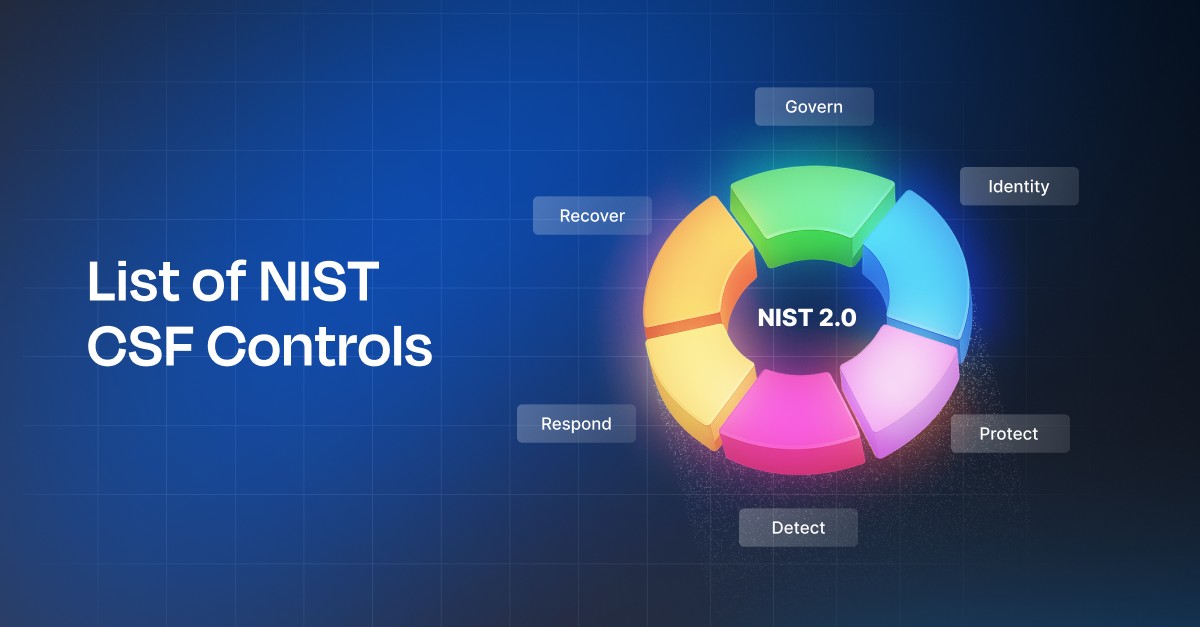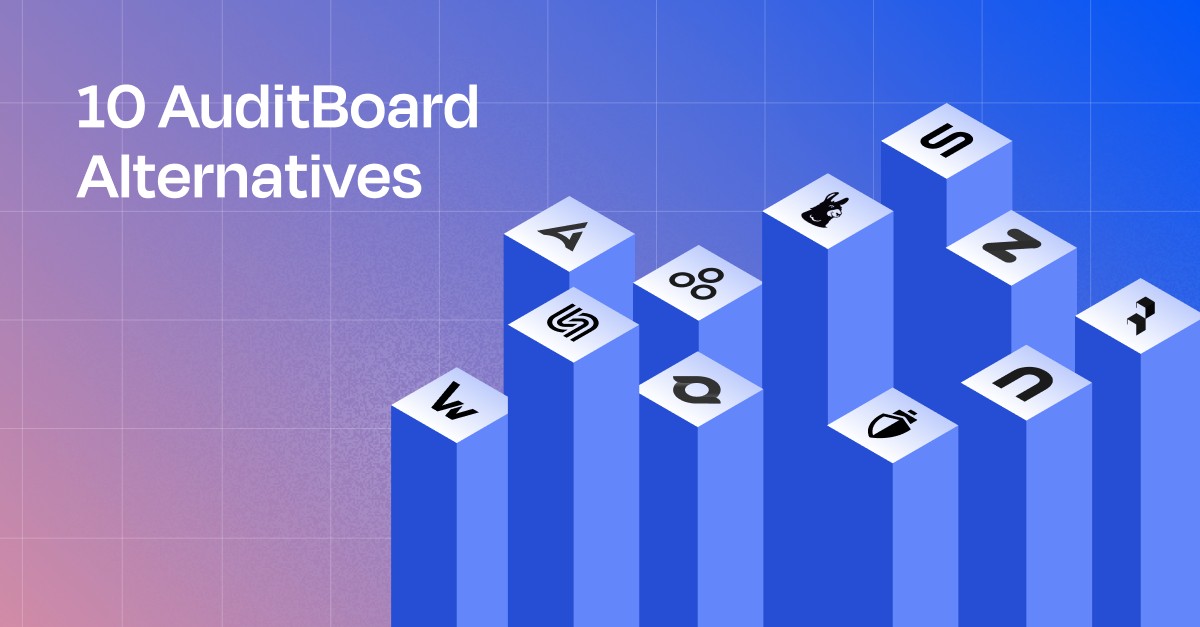TISAX Compliance: Benefits, How To Certify & Cost
Pansy
Mar 26, 2025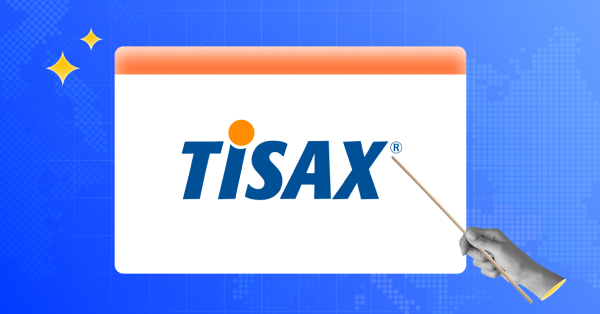
Lately, modern vehicles have become intelligent systems, too, because they can absorb, process, and generate vast amounts of data from their users (drivers and passengers). While this data is extremely valuable in the automobile industry, it is also vulnerable to exploitation.
Cars with advanced systems that rely on complex software and data exchange introduce significant cybersecurity risks. The victim of threats can range from intellectual property to personal data. This is where TISAX (Trusted Information Security Assessment Exchange) comes into play.
This article discusses the basics of TISAX compliance, its benefits, who it applies to, its controls, certification process, audit, cost, etc. Let’s dig in!
What is TISAX?
TISAX, or Trusted Information Security Assessment Exchange, is an exchange mechanism and analysis for information security in the automotive industry. It was developed by the ENX Association (France) and is recognized globally.
TISAX was established and published in 2017 by VDA (Verband der Automobilindustrie) along with ENX.
TISAX is based on the ISA (Information Security Assessment) Catalogue, which was also published by VDA. The most recent version is the ISA Version 6.0.3, published in 2024.
What is TISAX compliance?
TISAX compliance is adhering to the rules, controls, procedures, and policies for information security and data protection per the ISA catalog under VDA. It helps suppliers, manufacturers, and partners mutually understand data processing while mitigating risks.
TISAX bases its security controls on frameworks or regulations like ISO 27001 and GDPR while including additional measures for protecting consumer data in the automobile sector.
What are the benefits of complying with TISAX?
TISAX compliance allows suppliers to bypass many third-party information security reviews, expediting procurement processes with OEMs (Original Equipment Manufacturers). Here are three more benefits:
#1. Enhances brand trust and competitive advantage: It demonstrates your business’s commitment to rigorous security standards and fosters trust among clients, suppliers, and business partners.
#2. Secures information exchange: TISAX facilitates the secure sharing of information between manufacturers, suppliers, and service providers, improving transparency in the automotive supply chain.
#3. Improves security posture: It promotes a proactive approach to managing information-related risks and enhances the automotive industry’s overall resilience against digital threats.
Who does TISAX apply to?
TISAX applies to all organizations that process sensitive information within the automotive industry. It primarily concerns suppliers, service providers, and manufacturers who handle data related to design, production, and other confidential aspects of automotive development and manufacturing.
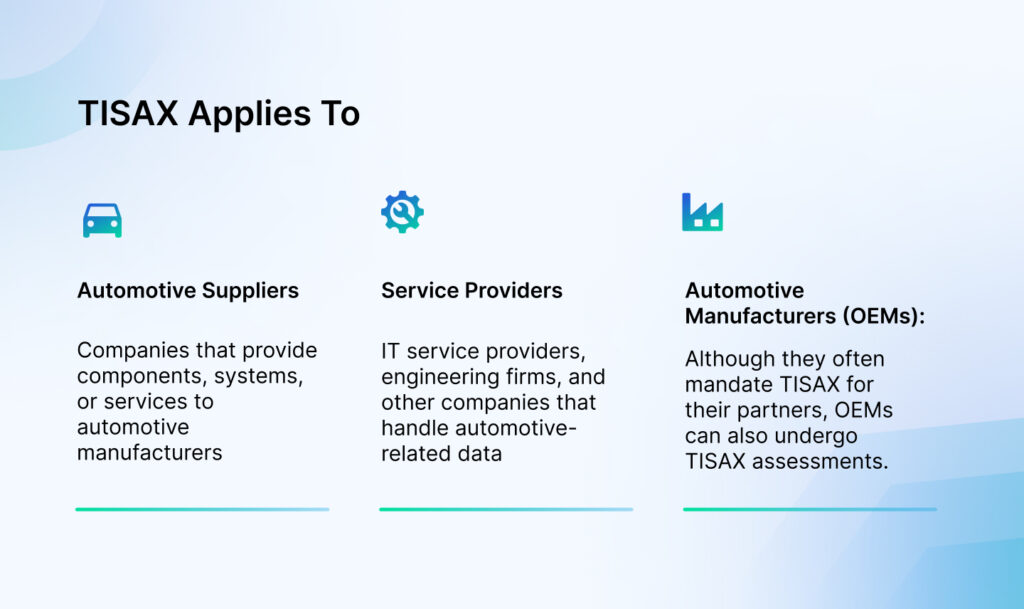
Is TISAX mandatory?
No, TISAX is not a legal requirement mandated by law.
However, it is de facto mandatory for many in the automotive industry. Major OEMs require their suppliers and service providers to have TISAX compliance as a prerequisite for doing business with them. So, while not legally enforced, it’s often a contractual obligation.
TISAX maturity and assessment levels
While defining your scope as part of the TISAX registration process, you’ll need to state your TISAX maturity and assessment level.
Maturity levels
Maturity levels in TISAX compliance reflect the degree to which an organization has implemented and maintains its information security controls. The maturity levels range from 0 to 5:
- Level 0: Not performed
- Level 1: Initial
- Level 2: Managed
- Level 3: Established
- Level 4: Predictable
- Level 5: Optimizing
Note
You need at least maturity level 3 without non-conformities to receive a TISAX label.
Assessment levels
Assessment levels determine the scope and rigor of the TISAX audit. These levels are based on the protection needs of the data being handled and are categorized as follows:
- Assessment Level 1 (AL1): TISAX self-assessment by the auditee. This level is typically used for low-risk scenarios.
- Assessment Level 2 (AL2): This level includes a plausibility check of the self-assessment, evaluation of evidence, and an expert interview. It is used for high-risk scenarios and may require on-site visits if specific conditions are met (e.g., prototype protection or connections to third parties).
- Assessment Level 3 (AL3): Full assessment, including evaluation of evidence, on-site inspections, and expert interviews. This level is required for very high-risk scenarios.
Here’s an example of mapping the TISAX assessment objectives to assessment levels per the Participant Handbook.
What is the TISAX certification process?
The TISAX participant handbook contains detailed information on registration, scoping, self-assessment, fees, etc. However, the complete overview of the TISAX certification process can be expressed in five steps:
1. Prepare and register on the ENX portal
2. Conduct a self-assessment and address gaps
3. Select an authorized auditor
4. Conduct a formal assessment for final validation
5. Publish results and maintain compliance
1. Prepare and register on the ENX portal
Before beginning the registration, it’s a good idea to do a preliminary preparation for becoming a TISAX participant. First, familiarize yourself with the VDA ISA (Information Security Assessment) catalog and ISO 27001 standards.
You can register your organization in the ENX portal, which requires basic company details and acceptance of the terms and conditions. During registration, you need to define your assessment scope, including which parts of your organization will be evaluated.
What happens after registration?
Once registered successfully, you’ll receive a confirmation email with a PDF of your TISAX Scope Excerpt, which contains your Participant ID, Scope ID, and other information you’ve provided.
2. Conduct a self-assessment and address gaps
A self-assessment includes determining your current security posture using the ISA catalog. This evaluates your ISMS (Information Security Management System) against TISAX standards.
Note: Rest assured if you’re already compliant with ISO 27001. Your basic controls regarding the ISMS will already be in place. The additional controls cater to specific automotive industry requirements.
Assess your stance with ISO 27001 Annex A controls:
This step is the most time-consuming and manually overloaded. At this point, including a TISAX-experienced consultant or a security specialist would be a good option. Consider a GRC automation tool to automate your security controls if you want to reduce manual overload.
For example, Sprinto already contains pre-mapped controls as per ISO 27001 requirements. With support, you can map the additional TISAX controls while addressing gaps and setting up checks. The platform will also help you collect evidence and simplify the audit.
3. Select an authorized auditor
For the formal assessment, you must only engage an independent audit provider accredited by the ENX Association.
As per the ENX website, there are sixteen authorized TISAX audit providers:
- AFNOR Certification
- BSI
- Bureau Veritas
- CIS
- DEKRA
- Deloitte
- DNV
- DQS
- EY
- KPMG
- OS
- PwC
- SGS
- TÜV NORD
- TÜV Rheinland
- TÜV SÜD
4. Conduct a formal assessment for final validation
Before the formal evaluation, the chosen auditor can review your self-assessment results and verify their completeness and accuracy. A compliance automation tool at this point comes in handy to review evidence and mapped controls in the dashboard itself.
Once your security controls have been assessed and verified, the auditor conducts the final assessment depending on the assessment level (AL1, AL2, or AL3).
If there are any nonconformities, they must be addressed promptly. After that, a follow-up assessment must be conducted (within nine months) to confirm that all issues have been resolved.
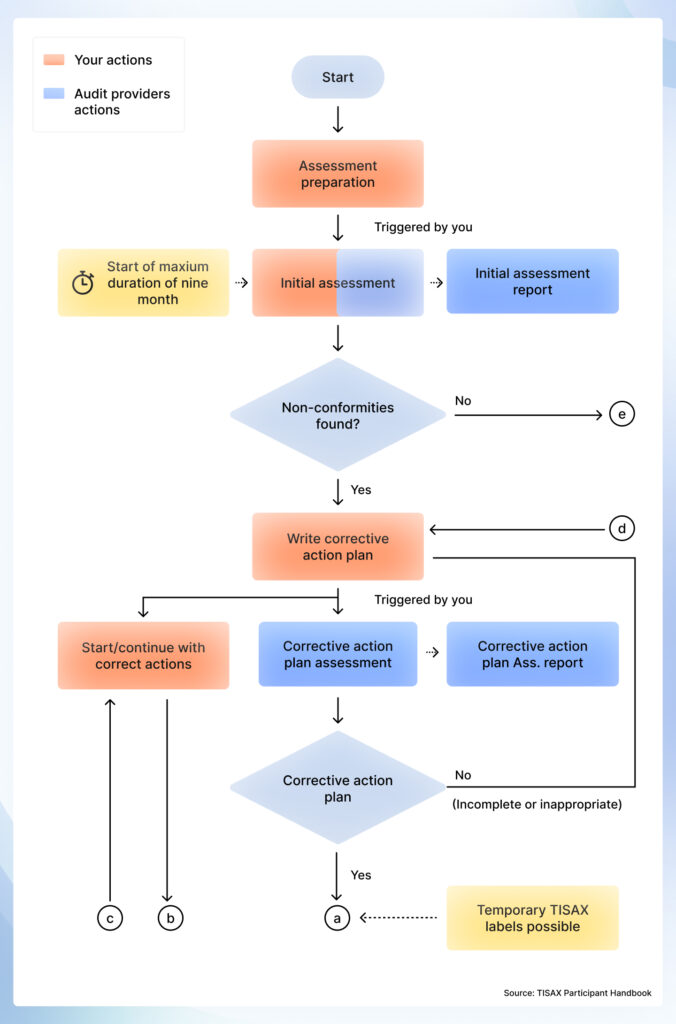
5. Share and maintain your TISAX label
Remember how we talked about mapping TISAX assessment objectives to AL (Assessment Level)? After you receive your TISAX final report, these objectives are called TISAX levels.
The TISAX label is an important form of communication with your partners and vendors. You can publish your assessment results on the TISAX Exchange platform to share with partners.
The TISAX labels are valid for three years and need to be renewed after three years.
What is the cost of implementing TISAX?
TISAX implementation costs depend on factors like company size, complexity, existing complying frameworks, and assessment scope. Furthermore, different types of costs are involved, which can vary business-wise.
An overall estimation of the costs involved in TISAX:
| Type of cost | Description | Estimated/approximate cost |
| Registration fee | The initial fee for registering on the ENX portal | $500 USD |
| Audit provider fees | Fees for conducting the formal assessment | $5,500 to $16,500 USD |
| Implementation and operational costs | Costs for preparing the ISMS, consulting, and technology upgrades | $22,000 to $55,000 USD |
| Consulting services | Fees for external consultants assisting with preparation and gap analysis | €100 to €300 per hour |
| Annual label fee | Ongoing fee for maintaining the TISAX label | $1,100 to $3,300 USD |
| Follow-up audits | Additional costs for any follow-up audits required | Varies based on complexity and scope |
Sources: Compliance Aspekte, ISMS Connect, IS Decisions, StrikeGraph.
As per the above table, the estimated cost for implementing TISAX is around $29,200 to $75,600.
What is the difference between TISAX and ISO 27001?
TISAX is a specialized security framework for the automotive industry, while ISO 27001 is a global standard for information security management across all industries.
Here’s more on their differences in a table:
| Factor | TISAX | ISO 27001 |
| Industry focus | Primarily for the automotive industry, focusing on supply chain security and intellectual property protection | Applicable to all sectors and industries worldwide |
| Certification process | Assessment-based label, with three levels of assessment (self-assessment, remote audit, on-site audit) | Formal certification process conducted by accredited bodies |
| Risk management | Emphasizes risk management specific to automotive contexts, such as supply chain risks | Generalized risk management approach applicable across all industries |
| Assessment frequency | Annual reassessments required | Audits are typically conducted annually or based on organizational risk |
| Global recognition | Primarily recognized within the automotive sector, mainly in Europe | Globally recognized across all industries |
| Documentation and scope | Applies to an entire site without exclusions | Allows for a defined perimeter within an organization |
| Standards and framework | Based on VDA ISA requirements, with additional automotive-specific controls | International standard with a broader set of controls outlined in Annex A |
| Audit sharing | Assessment results are shared via the ENX platform with authorized partners | Certification is publicly recognized and displayed |
What challenges can you expect while implementing TISAX?
If you’re using TISAX best practices to implement the process, you’re unlikely to face many challenges. However, there are some common limitations that all participating organizations complain about:
#1. Avoiding overcomplicated ISMS creation and documentation: Creating an ISMS from scratch can be tedious. TISAX requirements require extensive documentation based on the VDA ISA catalog, which demands significant technical expertise.
#2. Preventing prototype security gaps: TISAX mandates strict protection of sensitive prototypes. Implementing the necessary controls to secure this data, including access controls and encryption, requires extensive expertise and resources.
#3. Eliminating compliance inconsistencies: Sustaining TISAX compliance is challenging due to ever-evolving security threats and technological shifts. This demands continuous audits and updates to security controls.
How can Sprinto help you with TISAX compliance?
Now that we know how to prepare for or implement the TISAX framework, it’s time to take a smarter, budget-friendly route.
For businesses already ISO 27001 compliant, rest assured that Sprinto can help you close TISAX requirements in a few weeks with common control mapping.
For those starting from scratch, Sprinto offers a control library that aligns with most TISAX requirements, allowing you to map your existing controls to TISAX criteria automatically. You can also access pre-built policies and training modules that can be customized according to your requirements.
The best part is you don’t have to document evidence separately because the platform automates the collection of TISAX evidence and ensures that all necessary documentation is readily available and up-to-date.
Frequently asked questions
1. How long is the TISAX certification valid?
TISAX certification is valid for three years without requiring yearly surveillance audits. However, internal audits are suggested to check if all controls are functioning as they should.
2. What is the TISAX label?
The TISAX label is not a traditional certificate but rather the result of a successful assessment, which can be shared with partners via the ENX platform to demonstrate compliance.
3. What is TISAX level 3?
TISAX Level 3 refers to the highest assessment level, which involves a full on-site audit for organizations handling sensitive data.
4. How do I check TISAX certification?
Organizations typically share their assessment results through the ENX platform with authorized partners to verify TISAX certification.
5. Is TISAX ISO 27001?
TISAX is not ISO 27001 but builds upon its requirements, adding automotive-specific controls. While ISO 27001 is a global standard, TISAX is primarily used in the automotive industry.
6. How many security controls are required for TISAX compliance?
The exact number of security controls required for TISAX compliance depends on the organization’s assessment objectives. TISAX is based on the VDA ISA catalog, which outlines specific controls for automotive suppliers.


Use Sprinto to centralize security compliance management – so nothing
gets in the way of your moving up and winning big.
















